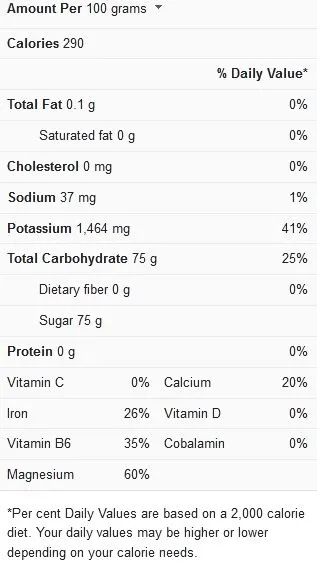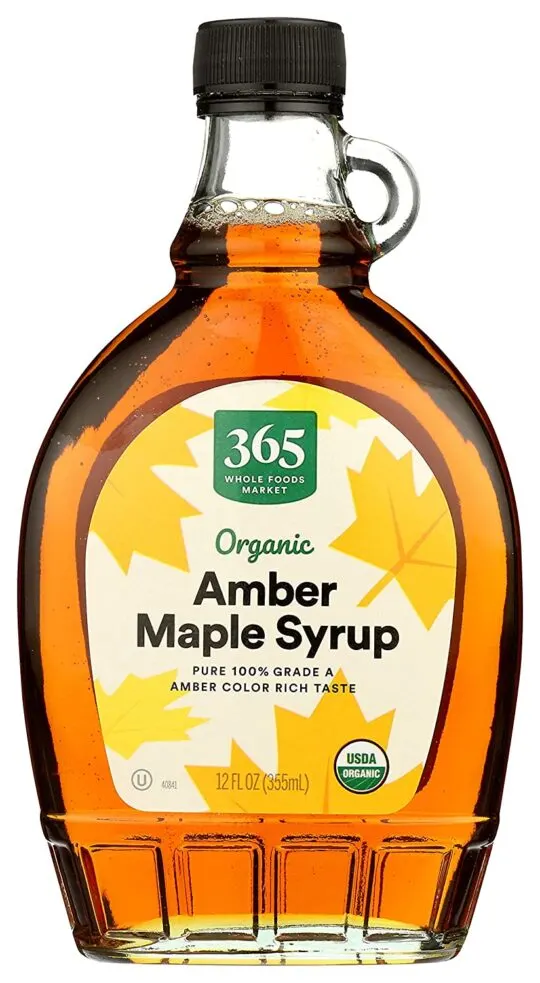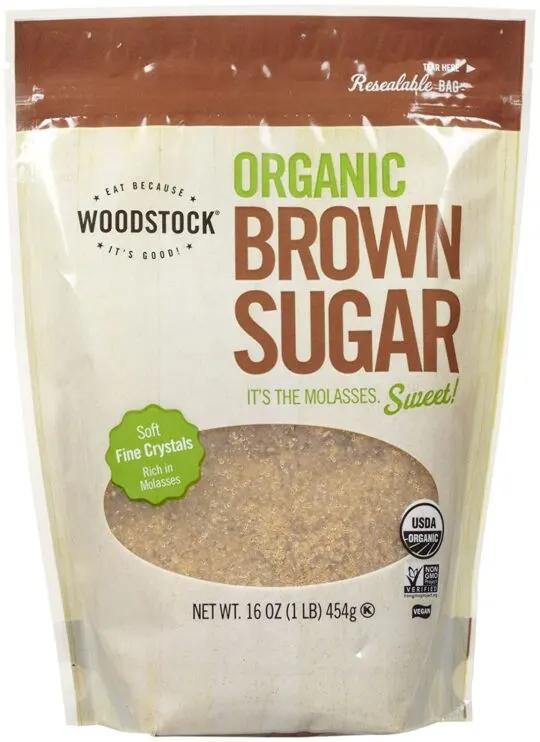Molasses, one of the popular by-products of the sugar production process, is one of those ingredients that introduce delicious autumn flavors. Each flavor profile comes in various dark, sticky, and sweet kinds. If you’ve ever cooked with dark molasses, in particular, you’ll be able to testify to the interesting flavors it introduces to sweet and savory recipes.
Let’s say you can’t manage to find any dark molasses during one of your unplanned cooking adventures; what’s your next step? Our advice? Grab the next available substitute!
Maybe you’re not familiar with the existence of any substitutes for dark molasses, but not to worry, that’s exactly what we’re here to address. Make sure to pay attention to appropriate substitution amounts and methods, such that you’ll get only the best results with your recipes.
Molasses Nutrition Facts

What are Dark Molasses?
Molasses is derived from the sugar production process as one of the by-products. Typically, crushing sugar cane to release the delicious juices begins the process. Sugar crystals form when the liquid from the sugar cane is boiled, and these crystals become the sugar that everyone is familiar with. Molasses is the thick syrup that remains after sugar crystals have formed.
The boiling procedure for producing sugar crystals can be repeated several times afterward, giving rise to various molasses. The sugar content of the molasses gradually becomes reduced, and the molasses becomes darker and more earthy-flavored the more the process is repeated.
Boiling the molasses a second time is what produces dark molasses. This molasses variation is
darker and thicker than the light type, with a richer, deeper flavor that has overtones of bitterness. Although
not as sweet as light molasses, it also does not possess the same degree of bitterness as blackstrap molasses.
Uses of Dark Molasses in Recipes
Molasses, in general, have a ton of uses that range in nature. Dark molasses, in particular, can be utilized in a variety of ways, from sweet to savory meals. For instance, dark molasses can help thicken barbecue sauces for meat-based recipes such as pulled pork and add moisture and color to baked products like pecan pie.
Some popular recipes that feature dark molasses are listed below:
- Dark molasses gingerbread cake
- Chewy molasses cookies
- Molasses-bourbon beef tenderloin
- Orange spice crackle cookies
- Steakhouse dark bread
- Dark chocolate molasses cookies
- Perfect soy-grilled Steak
- Pumpernickel bread
- Molasses barbecue sauce
- Sweet molasses brown bread rolls
- Molasses grilled chicken
- Russian black bread
- Molasses and pepper-crusted Steak
- Molasses banana bread
- Bourbon molasses marinated Steak
Substitutes for Dark Molasses
Dark molasses introduce many delicious flavors that make you love autumn. Used in sweet and savory recipes, the depths of flavors it inspires are just wholesome. As a result of these properties, dark molasses may seem irreplaceable in your recipes. Still, there’s hardly any “irreplaceable” ingredient in the world of cooking, and dark molasses are a case in point.
The food items described below work as great substitutes for dark molasses when you’re in a bind:
Honey

Honey is typically quite sweet, has a floral flavor, and is golden. However, because there are many kinds of honey, you can tailor your selection to be as close as possible to dark molasses.
A honey variant with a darker color and more robust flavor (such as buckwheat honey) would be ideal for replacing dark molasses in recipes. If you’d prefer to compensate for honey’s naturally higher sweetness level as well as its thinner consistency compared to molasses, plan for a 1:1 substitution ratio or use slightly less honey than you would dark molasses.
Maple Syrup

Maple syrup has a flavor reminiscent of malt and caramel, and it presents in a variety of hues, just like honey. If possible, use the darkest maple syrup you can find to substitute for dark molasses.
Because
maple syrup is much thinner than molasses (the water content in maple syrup is approximately 34%, while molasses are about 20%). It may seem a tad more difficult to incorporate into baking recipes.
When using maple syrup as a substitute for molasses in a cake, for instance, you could choose to make a 1:1 substitution or reduce the quantity of another liquid ingredient by a small amount if you’re worried about the cake batter is too watery.
Brown Sugar

Brown sugar is essentially molasses-containing sugar. Typically, this implies that the sugar is first granulated, then the molasses is initially separated is reintroduced into the sugar to produce light or brown sugar.
Brown sugar has a lot of the same characteristics as dark molasses, especially darker varieties. The downside, however, is that brown sugar is a dry sweetener, which could make a baking recipe that calls for a liquid sweetener difficult to work with.
If you’re cooking up a savory recipe, a 1:1 substitution should suffice (then, you may adjust the liquid ingredient if necessary). If, on the other hand, you’re working with a baking recipe, use 3⁄4 cup of brown sugar to 1 cup of dark molasses, although you may need to add about 1 to 4 tablespoons of water if the result isn’t quite right.
Frequently Asked Questions (FAQs)
Is dark molasses the same as maple syrup?
Like molasses, maple syrup is thick and syrupy, but it has a sweeter flavor, akin to honey and dark corn syrup. Another significant distinction is the market cost: pure maple syrup is typically more expensive than molasses.
Can you use golden syrup instead of molasses?
Golden syrup has a honey-like appearance but possesses the same caramel flavor as molasses, except that it is slightly sweeter and a tad more delicate. You can use the golden syrup to replace molasses in a 1:1 substitution ratio.
Can I use applesauce instead of molasses?
Use applesauce as a molasses substitute if you’re trying to avoid processed sugars altogether. To make a slightly healthier replacement in your baking, combine sugar and cinnamon.
Conclusion
Dark molasses add delicious notes of flavor to sweet and savory recipes. As such, when in a bind, it may seem like your entire cooking process would be frustrated by a lack of this ingredient.
Not to worry, though; the substitutes we’ve suggested in this article should work great in your recipes to replicate the flavors of dark molasses. Also, if you’re lucky, you just might find yourself with a new favorite ingredient to use in your favorite recipes.
